
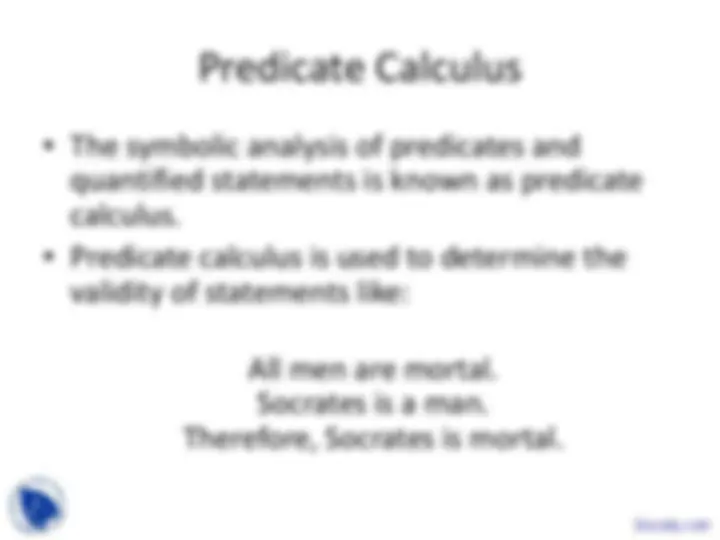
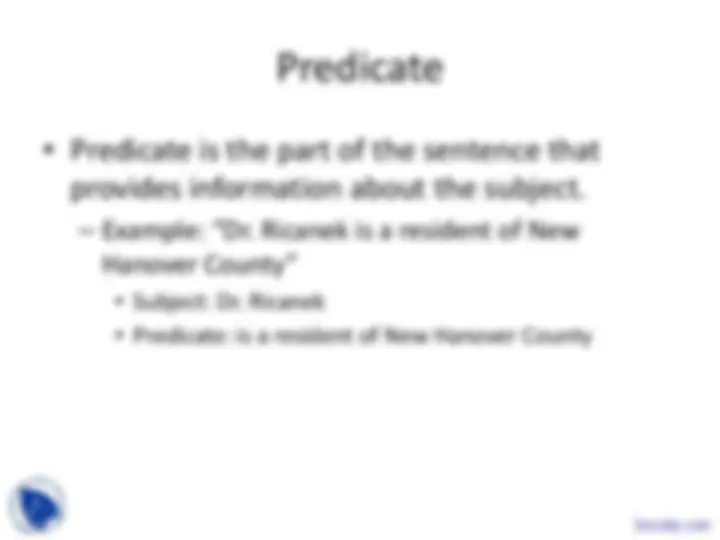
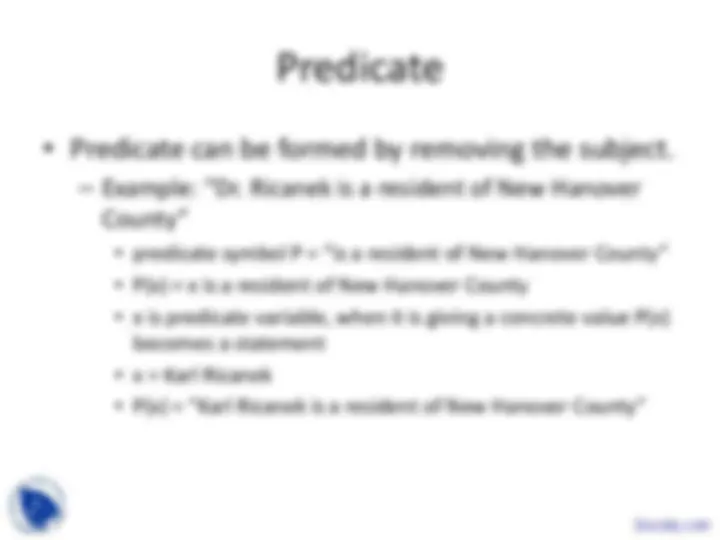

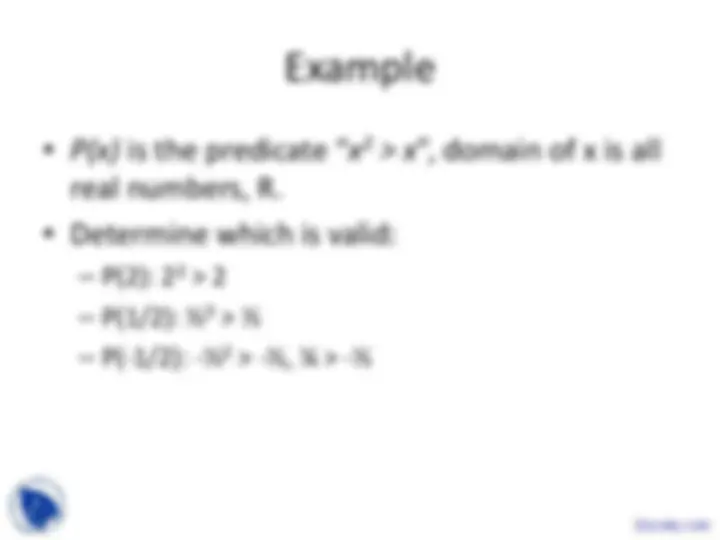
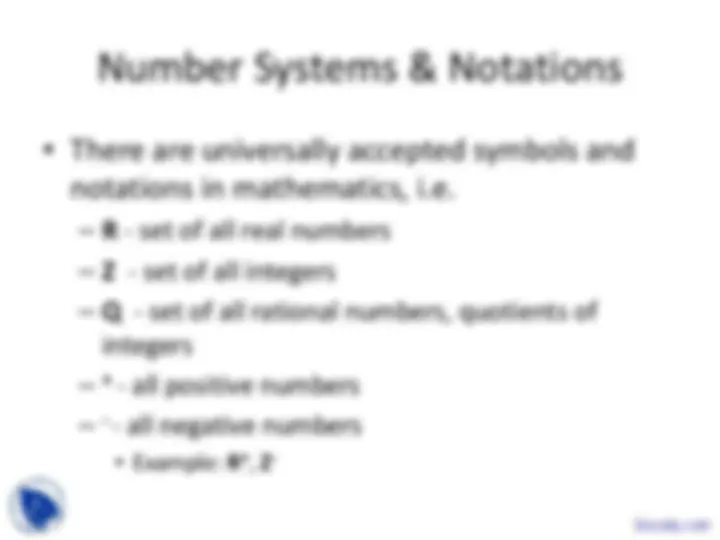
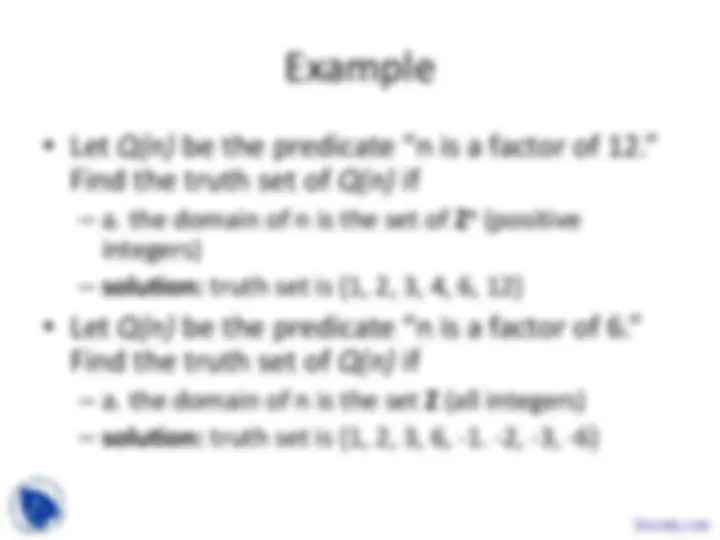
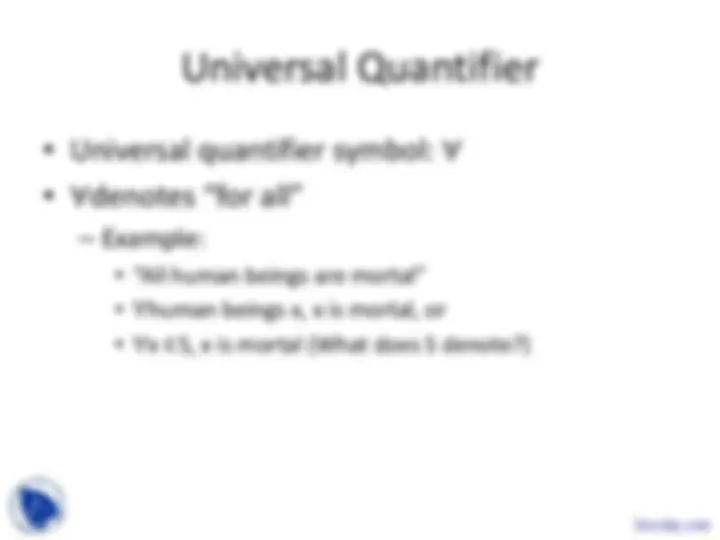
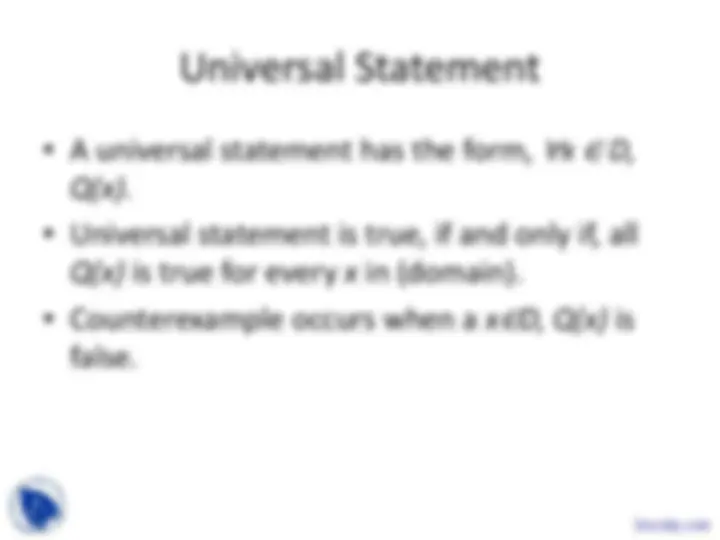
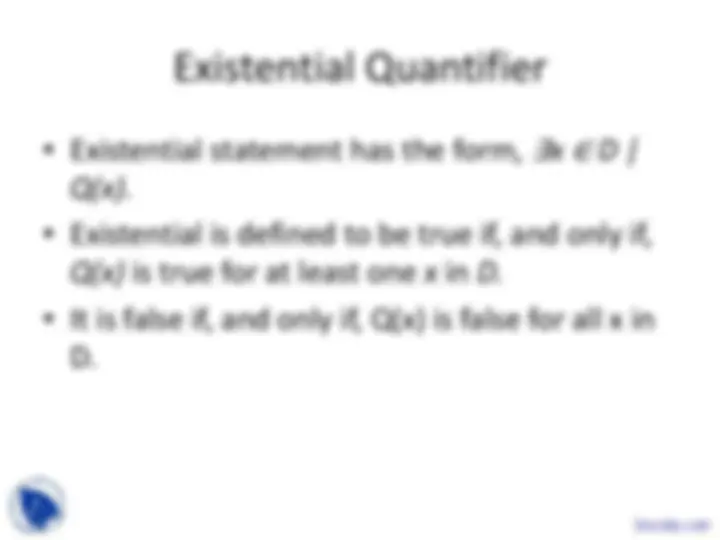
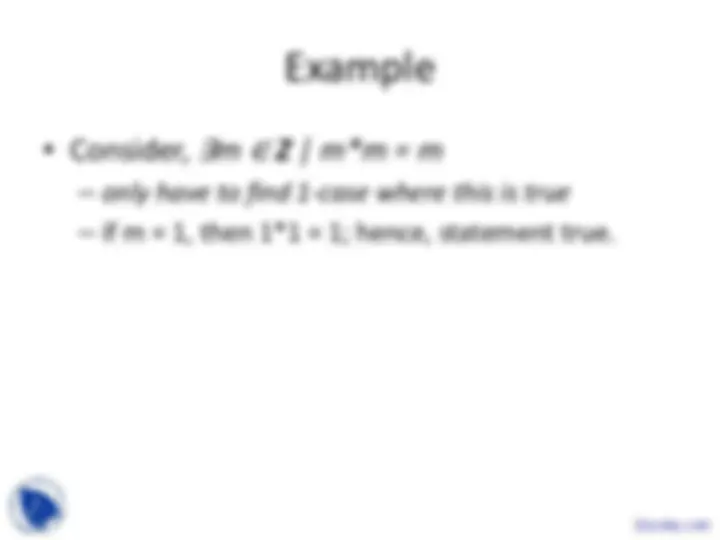
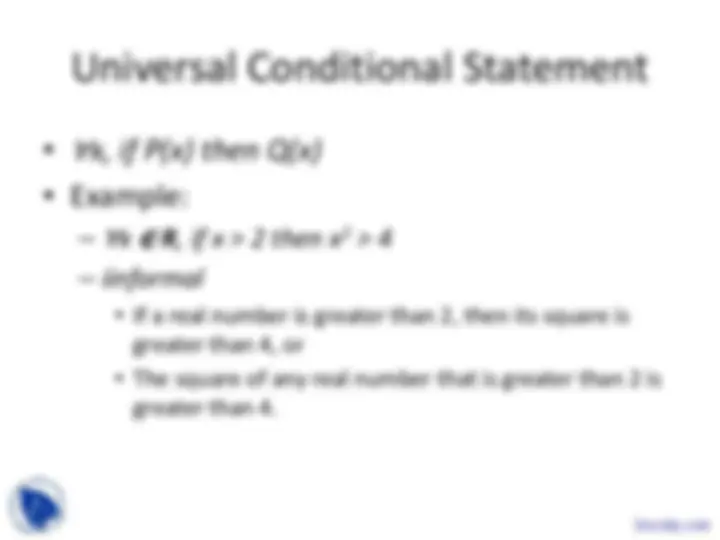
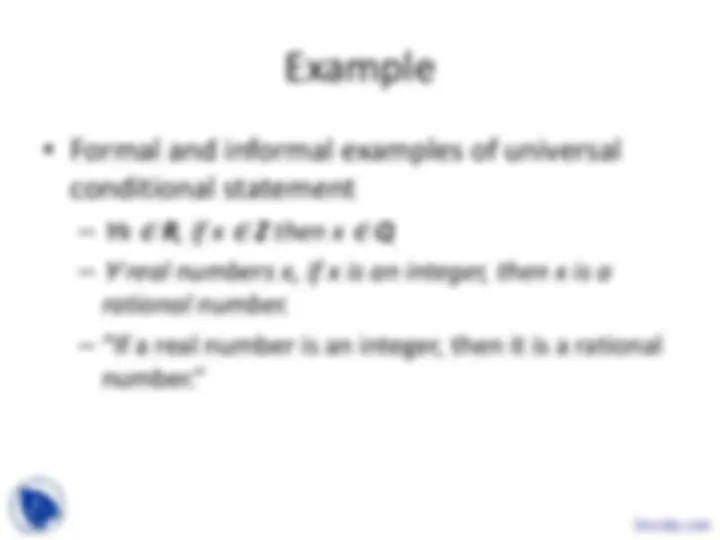
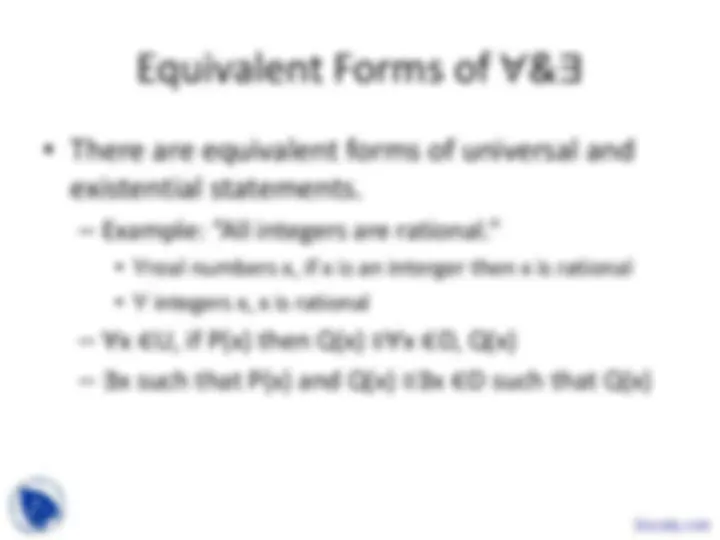


Study with the several resources on Docsity

Earn points by helping other students or get them with a premium plan


Prepare for your exams
Study with the several resources on Docsity

Earn points to download
Earn points by helping other students or get them with a premium plan
Community
Ask the community for help and clear up your study doubts
Discover the best universities in your country according to Docsity users
Free resources
Download our free guides on studying techniques, anxiety management strategies, and thesis advice from Docsity tutors
An introduction to predicates and quantified statements in the context of predicate calculus. Predicates are the parts of a sentence that provide information about the subject, and they can be formed by removing the subject or the nouns. Predicate calculus is used to determine the validity of statements by analyzing their predicates and quantifiers. The basics of predicates, their formation, domains, and truth sets, as well as the universal and existential quantifiers and their statements.
Typology: Slides
1 / 22

This page cannot be seen from the preview
Don't miss anything!















The Logic of Quantified Statements
Intro to Predicates & Quantified Statements
statement is true.